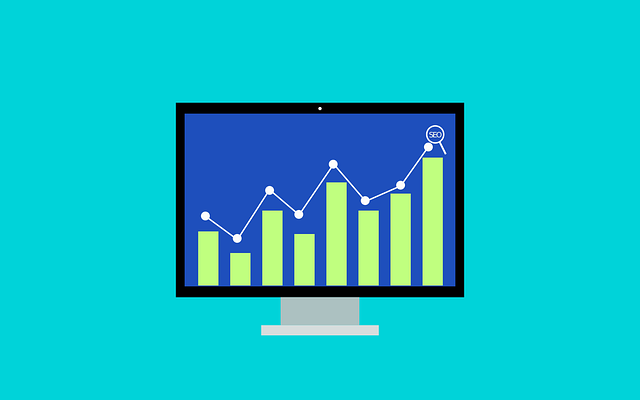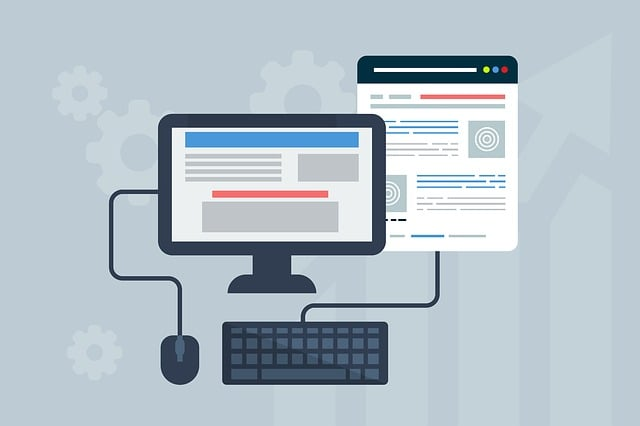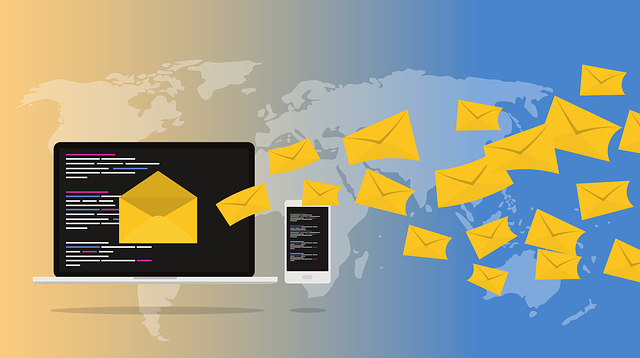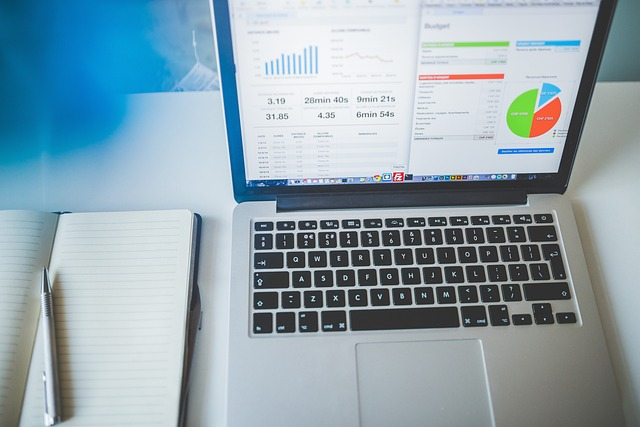We’ll increase conversions by
20-100+%
on your website.
Get a FREE Audit today
See how we can help your business increase conversion rates
Conversion Rate Optimization Tools

What is Conversion Rate Optimization (CRO)?
Conversion Rate Optimization (CRO) is an intricate process that involves the strategic improvement of a website or marketing campaign in order to augment the proportion of visitors who carry out a desired action, whether it be the acquisition of a product, the completion of a form, or the subscription to a newsletter, among other possibilities.
CRO seeks to elevate the efficacy of a website or marketing campaign by means of rendering it more captivating and user-friendly to visitors, consequently resulting in a proliferation of conversion rates and a superior return on investment (ROI).
This optimization process entails meticulous examination and interpretation of website and user data, identification of areas that are amenable to enhancement, and systematic testing of various changes in order to ascertain the modifications that yield the most favorable outcomes.
In essence, CRO is a multifaceted procedure that requires a sophisticated understanding of real users, an expert command of data and web analytics tools, and a shrewd grasp of the principles of user experience (UX) design.
It is only through the synergistic application of these skills that one can optimize a website or marketing campaign to achieve maximal success.
Why is CRO Important for Businesses?
Conversion Rate Optimization (CRO) is a transformative methodology that can markedly improve the financial fortunes of businesses.
By enhancing the proportion of web traffic who undertake a desired action, CRO can notably augment the return on investment (ROI) of businesses, thereby yielding a boon to their bottom line. Many businesses seek conversion rate consulting services to assist with the implementation of CRO strategies.
What is remarkable about CRO is that it achieves these outcomes without necessitating additional expenditures on advertising or acquisition.
In addition to its fiscal benefits, CRO also confers improvements to user experience (UX), which can engender higher levels of customer contentment and loyalty.
By optimizing a website for conversion, businesses can create a seamless, frictionless digital environment that is easy to navigate, use, and comprehend.
Visitors who find a website effortless to use are more inclined to revisit and to engage with the brand, which can yield substantial long-term advantages.
CRO is also replete with opportunities to glean valuable insights into target audiences and their engagement with a website.
By comprehensively analyzing website and user data, businesses can discern areas that are conducive to enhancement of customer journey and, accordingly, craft optimization strategies that are tailored to the precise needs of their customers.
This wealth in depth of information can also inform other aspects of a business, such as product development and marketing strategies.

Conversion rate optimization tools
Conversion rate optimization tools represent a panacea for businesses that aspire to increase their online conversions.
CRO tools are software programs or platforms that offer a wide gamut of features, such as A/B testing, heatmapping, exit-intent popups, surveys, feedback collection, and a slew of others.
These tools are uniquely designed to help businesses optimize their website or marketing campaigns for increased conversions.
By harnessing the power of conversion rate optimization tools, businesses can cull through a mountain of website and user data to pinpoint areas that require enhancement, and subsequently test various modifications to identify the changes that engender the highest conversion rates.
CRO tools are multi-functional and can be deployed for a diverse array of online marketing channels, including websites, landing pages, emails, and social media campaigns.
Their versatility in depth makes them the perfect fit for businesses of all shapes and sizes that seek to optimize their digital environment. With the abundance of CRO tools available, businesses have an abundance of choices to tailor their conversion tool selection to meet their precise needs and goals.

Common Conversion Rate Optimisation Tools
Heat maps tools
Heat maps tools are an increasingly popular type of software that enable businesses to get a deeper understanding of how users are interacting with their website.
Heat maps use color-coding to visually represent data about user activity, such as clicks, scrolls, and hovers on a web or landing page. By analyzing this a visual representation of data, or heat mapping, businesses can gain insights into how users are engaging with their website and identify areas for improvement.
One of the benefits of heat maps tools is that they can segment data by different factors, such as device type, traffic source, or user behavior. This segmentation allows businesses to identify specific user groups and tailor their optimization efforts to their unique needs.
For example, a business might use heat maps to pinpoint where mobile users are struggling to navigate the website and make changes to improve the mobile user experience.

A/B testing tools
A/B testing tools are powerful software programs that enable businesses to conduct experiments on their web pages to determine which version will lead to the highest conversion rates.
This process involves creating two or more different variations of a web page with different elements, such as headlines, button colors, or layouts. The A/B testing tool then randomly assigns visitors to one of the variations and tracks which version leads to the highest conversion rate.
The beauty of A/B testing tools is that they can provide businesses with valuable insights into how even small changes can have a significant impact on conversion rates.
By comparing different variations, businesses can identify which changes result in the highest conversion rates and then apply those changes to improve overall performance.
Exit-intent tools
Exit-intent tools are innovative software programs that utilize exit-intent technology to captivate visitors who are on the verge of leaving a website without converting.
These tools use pop-ups or messages to encourage visitors to take a desired action, such as making a purchase or subscribing to a newsletter. By utilizing exit-intent tools, businesses can reduce their bounce rates and increase conversions, leading to a boost in revenue.
Exit-intent tools offer a variety of customizable features, such as targeted messaging and specific user segments, making them a powerful tool for optimizing website performance.
Additionally, these tools can provide visitors with incentives, such as discount codes or free trials, to entice them to stay on the website and engage with the brand.

Survey tools
Survey tools are digital programs designed to aid businesses in gathering feedback from website visitors to optimize their website for increased conversions.
These tools come in various forms, such as surveys, polls, or feedback forms, and can be presented to site visitors during or after their website visit.
By collecting feedback from website visitors, survey tools provide businesses with insights into user behavior, preferences, and pain points. This data can be used to make informed decisions about website optimization and improve user experience.
Live chat tools
Live chat tools are dynamic software programs designed to enable businesses to communicate with website visitors in real-time using a chat window.
This feature allows visitors to interact with a sales representative, obtain support or receive answers to their questions while they are browsing the website.
Live chat tools can enhance conversions by providing businesses with an opportunity to engage with visitors when they are most interested in their product or service.
By providing instantaneous support or assistance, businesses can address visitor concerns or inquiries and enhance the probability of a conversion.
Feedback tools
Feedback tools are cutting-edge software programs designed to help businesses gather insights from website visitors on how they interact with their website.
These tools come in different forms such as online surveys and, feedback forms, or user testing, and provide businesses with invaluable information on user behavior, preferences, and pain points.
Feedback tools can be tailored to meet the specific needs of businesses, and can be customized to target specific user segments or pages.
With features such as sentiment analysis, businesses can delve deep into user feedback to identify common themes or sentiment, providing valuable insights to optimize their website.
How to Choose the Right CRO Tools for Your Business

Factors to consider when selecting CRO tools
When selecting the best conversion rate optimization and tools to improve website optimization and increase conversions, there are several factors to consider. Functionality is key, as you want to ensure the best conversion rate optimization tool you choose supports the features and capabilities you need, such as A/B testing.
Ease of use is also important, as you want to avoid complex tools that require extensive training or complicated interfaces. Look for tools with clear documentation or training resources to make the process as simple as possible.
Integration with other tools and platforms is another consideration, as you want to ensure seamless integration with your content management system (CMS), analytics tools, or customer relationship management (CRM) system.
Good customer support is also crucial, as you want to have access to documentation, training resources, or support teams to address any issues or questions that arise.

Budget considerations
When choosing the right Conversion Rate Optimization tools for your business, it is crucial to consider your budget. Here are some key budget considerations to keep in mind:
Cost:
Don’t forget to consider the cost of the CRO tools you are considering, and whether they fit within your budget. Some tools may offer a free or trial version, while others may require a subscription or upfront payment.
Be sure to factor in the total cost of ownership, including any ongoing fees or additional costs for customization or support.
ROI:
Consider the potential return on investment (ROI) of the CRO tools you are considering. Evaluate how much revenue you can generate from the improvements made using the tools, and compare that with the cost of the tools. Look for tools that provide a clear ROI and align with your business goals.
Scalability:
It’s essential to think about the scalability of the CRO tools you are considering. Look for tools that can grow with your business and accommodate your changing needs over time. Make sure the tools you select can handle the volume of traffic and data generated by your website.
Implementation:
Consider the cost of implementing the CRO tools you are considering. Look for tools that can be implemented quickly and easily, without requiring significant time or resources. Consider any additional costs for customization, training, or support.
Integration:
Don’t overlook the cost of integrating the CRO tools you are considering with your existing systems and platforms. Look for free tools, that can integrate with your CMS, analytics tools, or other CRM data and system, without requiring significant time or resources.

Understanding your audience and business goals
When it comes to selecting the right Conversion Rate Optimization (CRO) tools for your business, understanding your audience and business goals is crucial. Here’s why:
Audience insights:
CRO tools are designed to help you gain a better understanding of how your website visitors interact with your site. This allows you to optimize their experience and increase conversions. By understanding your audience, you can select CRO tools that provide the insights you need to make data-driven decisions about website optimization.
Business goals:
CRO tools work best when they are aligned with your business goals. By understanding your objectives, you can select CRO tools that help you achieve specific outcomes. Whether you want to increase revenue, improve customer engagement, or boost brand awareness, selecting the right CRO tools is essential.
Customization:
CRO tools can be customized to target specific user segments or to create landing pages. This customization is based on your audience insights and business goals. By understanding your audience and objectives, you can select CRO tools that can be customized to address your specific optimization needs.
Prioritization:
With so many CRO tools available, it can be overwhelming to decide which ones to use. By understanding your own target audience and business goals, you can prioritize which CRO tools are most important for your business. This allows you to invest your time and resources in the tools that will deliver the best results.

Integrations with existing tools
When it comes to choosing the right Conversion Rate Optimization (CRO) tools for your business, integrating with existing tools is key. Here’s why:
Efficiency:
Integrating CRO tools with your current systems and platforms can save you time and boost your efficiency. By connecting with the tools you already use, you can avoid having to enter duplicate data and simplify your workflow.
Data accuracy:
Integrations can also help improve data accuracy by reducing the chances of errors that may occur during manual data transfers between systems. This can result in more precise data analysis and better decision-making.
Cross-functional insights:
Integrations can provide cross-functional insights by linking data from different systems. For instance, connecting your CRO tools with your customer relationship management (CRM) system can help you spot customer behavior patterns and target specific customer segments or user segments more effectively.
Flexibility:
Integrations can also offer greater flexibility by enabling you to customize your CRO tools to fit your unique needs. For example, integrating with your content management system (CMS) can help you make changes to your website more easily without requiring the assistance of your development team.
Cost savings:
Integrating your CRO tools with your current systems can help you save on costs by avoiding the need to invest in new tools or systems. By leveraging your existing investments, you can extract more value from the tools you already have.
What are the Benefits of Using CRO Tools?

Increased website engagement
Employing Conversion Rate Optimization (CRO) tools can enhance website engagement in various ways, each intricately linked with the other. One of the foremost benefits of using CRO tools is the ability to improve the user experience by identifying and addressing problematic areas, such as navigating convolutions or confounding content. This, in turn, engenders a more seamless user experience that keeps visitors captivated and invested, thereby encouraging them to explore more pages on your website.
CRO tools also enable personalization, allowing for personalized content and product recommendations based on browsing history, purchase history, or demographic data. This personalized approach creates a more bespoke user experience that keeps visitors engrossed and engaged for longer periods.
Conducting A/B testing through CRO tools offers a scientific approach to website optimization, testing different variations of key elements of your website, such as different landing page, layouts, images, or copy, and then identifying which version of your site performs better. This testing affords a valuable means to identify areas of improvement to enhance engagement.
CRO tools also facilitate user feedback through surveys google analytics, polls google analytics, and user testing. Gathering feedback from visitors enables a deeper understanding of how users engage with your site, aiding in identifying areas for improvement to further increase engagement.

Better understanding of customer behavior
The employment of Conversion Rate Optimization (CRO) tools is a crucial aspect of gaining a deeper understanding of customer behavior, and it offers a range of benefits.
“Heat mapping tool is a widely-used CRO analytics tool that presents visual representations of where customers are clicking, scrolling, and spending the most time on a website. By identifying areas that are attracting the most attention and those that need improvement, heatmaps enable businesses to better understand how customers interact with their website.
CRO tools that offer surveys form analytics enable businesses to gather direct feedback from website visitors, providing insights into customer preferences, challenges, and motivations.
This feedback can inform website design, content, and messaging, enabling businesses to tailor their offerings to meet the needs of their audience.
Some CRO tools offer user behavior analytics, which provide businesses with in-depth insights into customer behavior across their website.
By analyzing which pages, products, or content are most popular with their audience, businesses can gain an understanding of their customers real users’ interests and preferences.
Employing CRO tools is essential to gaining a comprehensive understanding of customer behavior.
By utilizing visual representations of website activity, conducting scientific A/B testing, using customer interactions, gathering valuable direct feedback from customers, mouse tracking and analyzing user behavior across a website, businesses can refine their website design, content, and messaging, ultimately increasing conversion rates.

Enhanced customer experience
CRO (Conversion Rate Optimization) tools can bring a lot of value to businesses by improving conversion funnel and the customer experience in a multitude of ways.
Heatmaps:
Heat mapping tools can provide businesses with valuable insights into how customers are interacting with their website or ecommerce theme. By visually visual data representing customer activity, businesses can pinpoint which elements are drawing the user sessions most attention and which may need improvement. This information can then be used to optimize the website for a better user experience.
Personalization:
CRO tools with personalization features can help businesses deliver a more tailored experience to customers. By using data about the customer, businesses can customize their website with personalized product recommendations and content, creating a more relevant and enjoyable experience.
User Feedback:
CRO tools that allow for user feedback, such as surveys or polls, can provide businesses with a wealth of information about what customers like and dislike about their website. This feedback can be used to make changes and improvements that address pain points and improve the overall customer experience.
User Behavior Analytics:
CRO tools with user behavior analytics can help businesses identify areas of their website that are causing frustration or confusion for customers. By understanding how customers are interacting with their site, businesses can optimize their website for a more seamless and user-friendly experience.
Live Chat: CRO tools that offer live chat support can help businesses provide real-time assistance to customers. By addressing customer concerns and questions in a timely manner, businesses can create a positive and memorable customer experience.
CRO Tool Case Studies

Examples of businesses that have successfully used CRO tools
There are numerous examples of businesses that have employed CRO (Conversion Rate Optimization) tools to ameliorate their website performance to increase conversion, and boost conversions, and here are a few remarkable ones:
Booking.com:
Booking.com, a leading online travel booking platform, has employed A/B testing to optimize its website for maximum conversions. By incessantly experimenting with diverse variations of its website, encompassing landing page, layouts, images, and messaging, Booking.com has been able to improve its conversion rate by over 10%.
Spotify:
Personalization has been the key to enhancing customer experience and driving conversions for Spotify, a famous music streaming service. By utilizing data to suggest customized playlists, artists, and albums to users, Spotify has increased engagement and boosted subscriptions.
Dropbox: Dropbox, a cloud storage service, has used user feedback and A/B testing to optimize its website for better conversions. By gathering user feedback through surveys and polls, Dropbox has been able to identify pain points and implement changes to improve the user experience.
Moreover, by employing A/B testing to evaluate different versions of its website, Dropbox has witnessed a surge in signups by over 10%.
Shopify:
Shopify, an ecommerce platform, has employed heatmaps and A/B testing to enhance website performance and boost conversions. By scrutinizing user behavior with heatmaps, Shopify has been able to identify areas on its website that are causing friction for users and make alterations to improve the user experience.
Furthermore, by deploying A/B testing to assess different versions of its website, Shopify has experienced a rise in conversions by over 10%.

Challenges and Limitations of CRO Tools
Limitations of CRO tools
CRO (Conversion Rate Optimization) tools may offer businesses an effective way to enhance their website and page performance, and boost conversions, but they also present several limitations that demand careful consideration:
Incomplete insights:
Although CRO tools can provide valuable data on user behavior and website performance, they may fail to deliver a complete picture of the user experience. Data captured via cookies or tracking pixels, for instance, might not account for users who disable cookies or employ ad-blockers.
Resource-intensive:
CRO tests necessitate substantial time and resources to execute and interpret results. A/B testing, in particular, can be arduous to set up, administer, and analyze.
Limited scope:
CRO tools prioritize website performance and other conversion optimization tools over broader business objectives. Enhancing site conversions may not necessarily translate into improved customer loyalty or brand awareness.
Cost:
CRO tools can be costly, particularly for small enterprises or startups operating under tight budgets.
Complex implementation:
Some CRO tools demand intricate implementation, including custom coding or integration with other tools. These features may prove challenging for businesses lacking technical know-how.

Potential challenges when implementing CRO tools
The implementation of CRO (Conversion Rate Optimization) tools can be a perplexing process, as businesses may face several challenges that require careful consideration:
Technical hurdles:
Some CRO tools may necessitate custom coding or integration with other tools, which can be quite challenging for businesses lacking technical expertise. In some cases, businesses may need to seek help from a developer or consultant to assist with implementation.
Resource-intensive:
The process of implementing CRO tools and conducting tests can be very time-consuming and resource-intensive. It requires significant effort and investment to configure and execute tests, analyze results, and make website changes based on those findings.
Data quality:
The quality and accuracy of data collected by CRO tools can be impacted by multiple factors, including sample size, test duration, and sample representativeness. It is important for businesses to ensure that they gather high-quality data and interpret it correctly to make informed decisions.
Test validity:
Validity of A/B tests is essential for making reliable decisions based on the results. Businesses must be mindful of factors that could affect test validity, such as the Hawthorne effect, in which participants modify their behavior in response to observation or testing.
Balancing short-term and long-term goals: Although CRO tools can assist businesses in improving website performance and increasing conversions in the short term, it’s critical to balance these short-term goals with broader business objectives and the long-term health of the company.

Conclusion
Recap of the benefits of using CRO tools
In essence, adopting CRO (Conversion Rate Optimization) tools can deliver a host of benefits to businesses, including:
Heightened website engagement: CRO tools can be invaluable in gauging how customers interact with websites, enabling businesses to spot areas for improvement and limit bounce rates.
Superior understanding of customer behavior: By providing businesses with useful data and insights into customer behavior, preferences, and pain points, CRO tools can inform decision-making and enable businesses to customize their offerings to better match customer needs.
Improved website conversion rates:
CRO tools can help identify and address obstacles to conversion, such as confusing navigation, subpar landing page and design, or feeble calls-to-action. This, in turn, can result in more conversions and revenue.
Enhanced customer experience:
CRO tools can enhance the user experience on a website, making it smoother and more pleasurable for customers to browse and purchase.
Increased ROI:
Ultimately, by bolstering website conversion rates, lead generation and customer engagement, CRO tools can drive up ROI for businesses, leading to more leads, greater revenue growth and overall business success.
While some challenges may arise when implementing CRO tools, the gains are undoubtedly substantial and can help businesses realize their objectives, improve customer experience, and attain long-term triumph.

Exploring CRO tools to improve business performance
In today’s cutthroat business world, staying ahead of the game is crucial for success. That’s where CRO (Conversion Rate Optimization) tools come in, offering businesses a powerful way to optimize their website performance and drive customer engagement.
Through the insights provided by CRO tools, businesses can gain a better understanding of existing customers, preferences, and pain points. This data can then be used to optimize website design and content, leading to improved engagement and conversion rates.
Of course, implementing CRO tools can be challenging. Businesses need to ensure they are collecting high-quality data and interpreting it correctly to make informed decisions.
They also need to balance short-term goals with broader business objectives, and invest the time and resources needed to run tests and analyze results.
Despite these challenges, the potential benefits of CRO tools are significant. By improving website performance and driving increased engagement and conversions, businesses can increase their ROI and position themselves for long-term success.
In today’s fast-paced and ever-changing market, businesses that embrace CRO tools and find the right solutions for their unique needs are more likely to stay ahead of the curve and achieve their goals.









